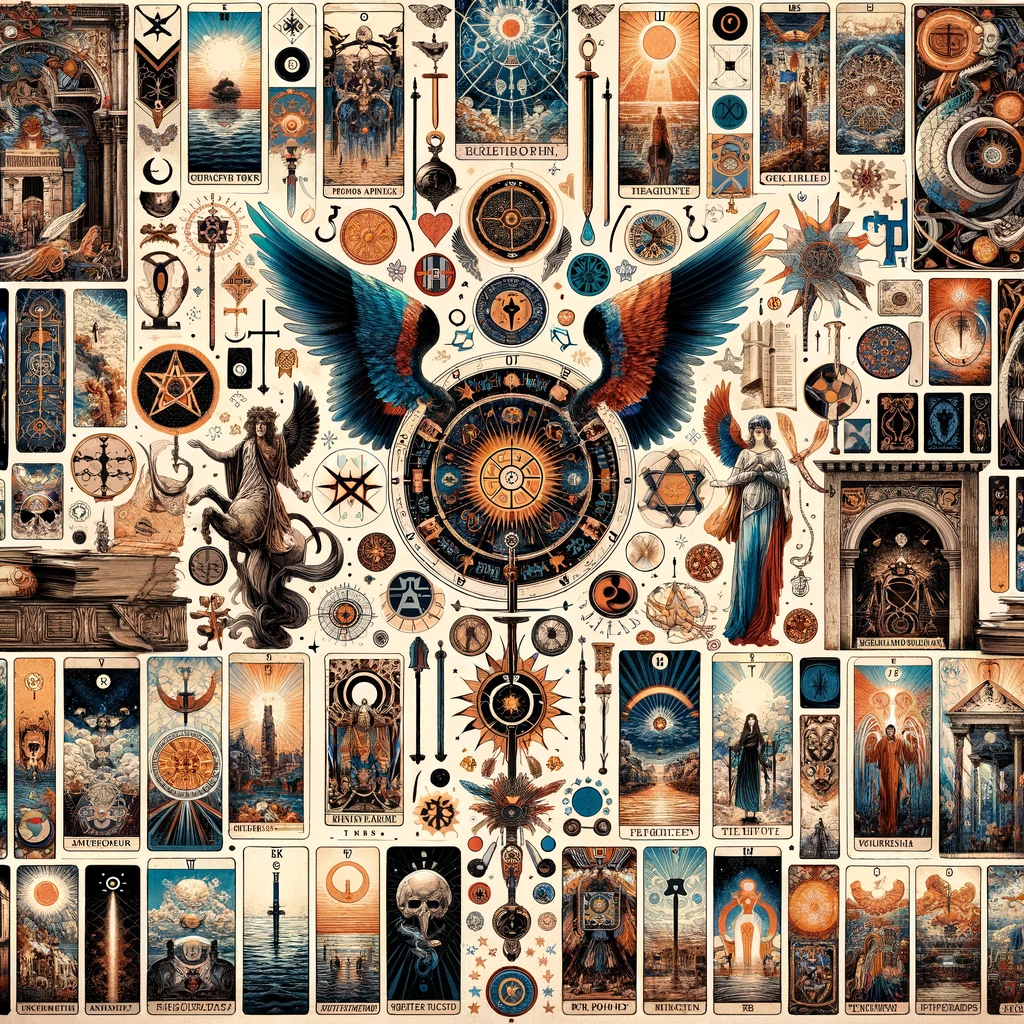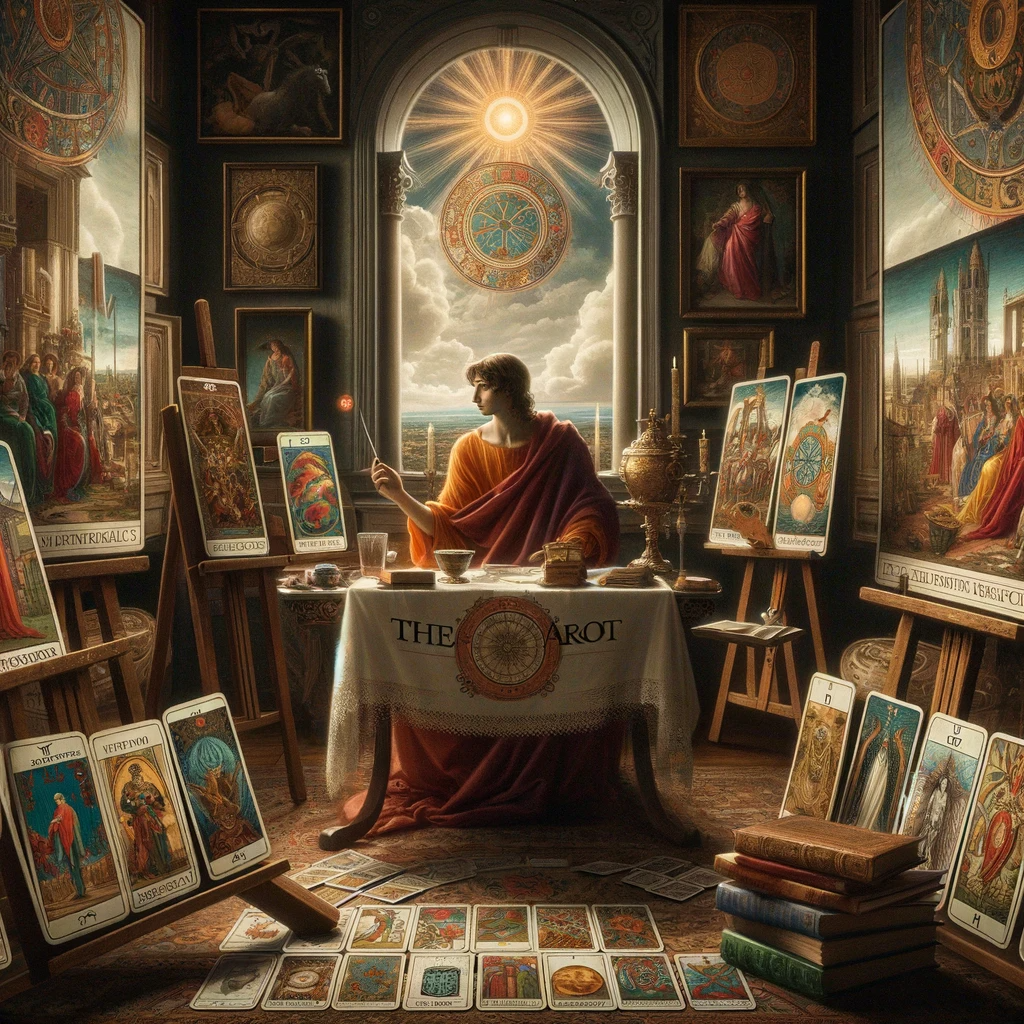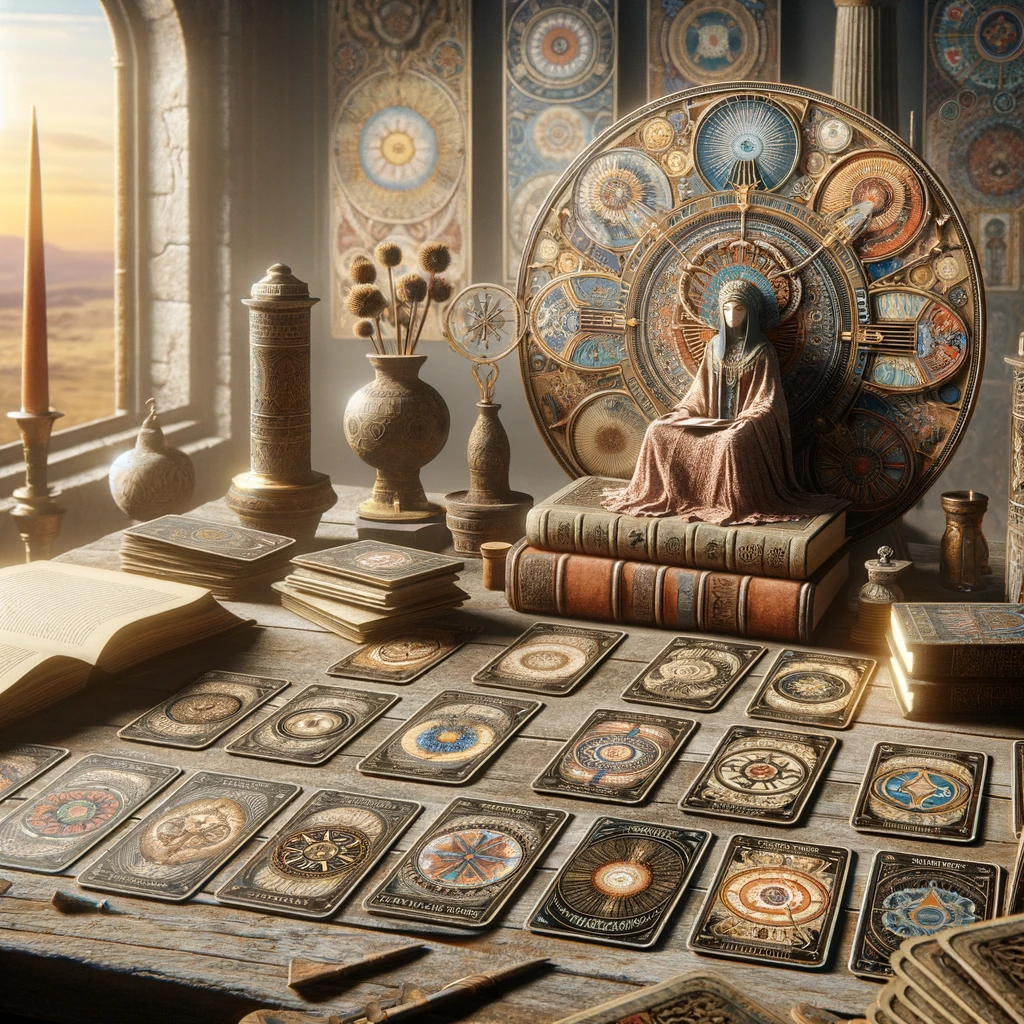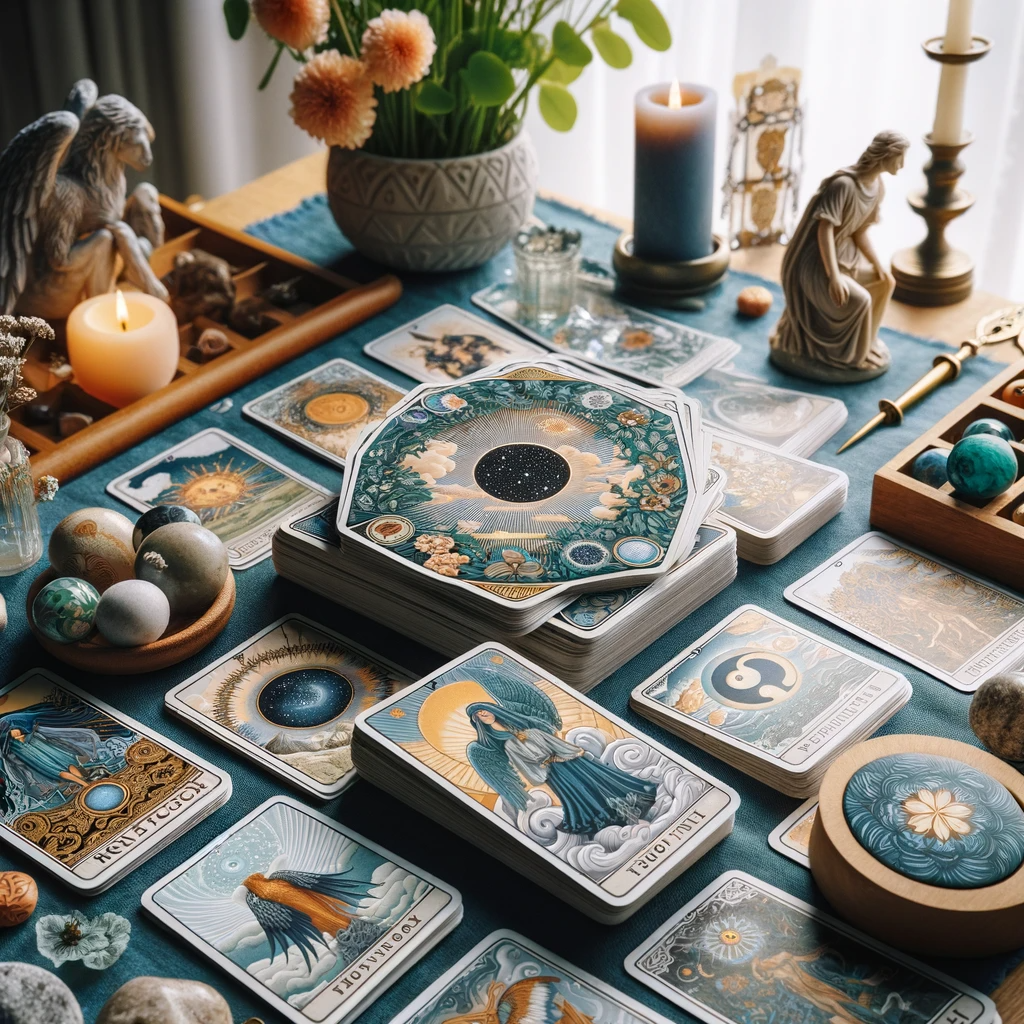The History of Tarot: From Ancient Origins to Modern Divination

The tarot is one of the most popular divination and fortune-telling tools used today. But where did tarot cards come from? Few people may know that tarot has a long, fascinating history that stretches back centuries.

Ancient Origins of Tarot
The exact origins of tarot cards are shrouded in mystery. Most scholars believe that playing cards first appeared in China as early as the 9th century. These cards, used for games, eventually made their way to Europe through trade routes. In the late medieval period, specialized decks specifically made for divination and occult purposes began to emerge in Italy and France.
The first clear references to the tarot deck come from 15th century Italy. In 1442, records from Ferrara indicate that a tarot deck known as the Trionfi (“Triumphs”) was used by the Duke of Milan. The Visconti-Sforza Tarocchi deck, also from 15th century Italy, is the earliest surviving tarot deck. This deck shows that from the very beginning, tarot was designed as more than just a gaming deck. It contained symbolic illustrations of figures that would have deep significance.
Tarot Becomes Associated with Esoteric Knowledge
During the Renaissance period, tarot became increasingly associated with esoteric wisdom and secret societies. In 15th century Milan and Ferrara, tarot was seen as influential in spreading underground knowledge related to hermeticism, alchemy, and Cabbalistic traditions.
Many occult scholars at the time, such as Heinrich Cornelius Agrippa and Paracelsus, referenced the symbolism and archetypes present in tarot. Divination using playing cards was mentioned in texts on magic and cartomancy. Occultists saw the tarot deck as having mystical significance and hiding universal truths about human nature.
In 1781, Antoine Court de Gébelin published a speculative text called Le Monde Primitif, linking the symbolism of tarot cards to the ancient Egyptian deities Isis and Thoth. This text associated tarot with ancient Egyptian occult mysteries for the first time. This Egyptian connection was further expanded on by Jean-François Champollion after his translation of the Rosetta Stone unlocked understanding of Egyptian hieroglyphics.
Although these Egyptian origins were later debunked as imaginative pseudohistory, the legend inserted itself firmly into tarot mythology. It fed the mystique around tarot’s esoteric nature.

Tarot Spreads to Occult Circles Across Europe
During the 18th and 19th centuries, interest in spiritualism, occultism, and secret societies was on the rise across Europe. In this environment, tarot left its origins as a gaming deck behind and became fully established as a tool for divination and fortune-telling.
Tarot became popular among French and British occultists such as Antoine Court de Gébelin, Etteilla, Eliphas Lévi, and Arthur Edward Waite. Each of these thinkers developed and expanded upon tarot philosophy and symbolism. Their writings and decks helped cement tarot’s association with Hermeticism, astrology, Kabbalah, and alchemy.
By the late 19th century, tarot had made its way to the United States. It gained traction among American occult movements like the Hermetic Order of the Golden Dawn. It was also adopted by popular stage magic acts of Harry Houdini and Howard Thurston, who used tarot cards to perform tricks and illusions.
The Rider-Waite-Smith Deck
In 1909, the Rider-Waite-Smith tarot deck was published and became an instant hit. Considered a classic, it remains the most popular and widely used tarot deck to this day.
The deck was illustrated by artist Pamela Colman Smith under the guidance of scholar Arthur Edward Waite. Waite was involved with the Order of the Golden Dawn and created the deck to reflect mystical symbolism related to that society.
The Rider-Waite-Smith deck strayed from earlier decks by more closely linking tarot imagery to esoteric disciplines like astrology, alchemy, and the Kabbalah. It also incorporated Christian and pagan mythology along with symbols from Freemasonry. This creative combination helped cement the deck’s enduring popularity and influence.
The Modern Divination Tool
Today, tarot remains a staple divination method around the world. Readers use it to provide spiritual guidance, predict future outcomes, analyze personalities, and more. Both traditional card readers and online tarot apps rely on tarot spreads to unlock mystical insights.
The imagery and archetypes present in modern decks retain links to ancient wisdom even as they evolve to reflect contemporary society. While tarot’s origins remain obscured by time, its enduring appeal is undeniable. For centuries, seekers have been drawn to tarot cards’ symbolic visual language and the way they resonate with the unconscious mind.
Whether it originated in China, Egypt, or medieval Italy, tarot emerged from humanity’s timeless desire to make sense of the world and glimpse what may lie ahead. Tarot offers a symbolic mirror of life’s mysteries and the infinite realms of human possibility.

Frequently Asked Questions About the History of Tarot
When did tarot cards first appear?
The exact origins of tarot are unknown, but playing cards first appeared in China as early as the 9th century. In Europe, tarot decks emerged in the late medieval period, with the earliest surviving decks dating from 15th century Italy.
How did tarot cards evolve from gaming decks into tools for divination?
During the Renaissance, tarot became associated with esoteric wisdom. Occult scholars linked tarot imagery to hermeticism, astrology, Kabbalah and other mystical disciplines. By the 18th and 19th centuries, tarot was widely used for fortune-telling in occult circles across Europe.
What was the Rider-Waite-Smith deck and why was it so influential?
Published in 1909, the Rider-Waite-Smith deck innovatively incorporated mythological, astrological, and mystical symbolism. It helped cement tarot’s connection to divination and remains the most popular deck used today.
How are tarot cards used today?
In contemporary times, tarot remains a popular form of divination. Readers use card spreads to interpret events, analyze personalities, offer spiritual guidance, and predict outcomes. Both traditional and online tarot readers rely on tarot’s archetypal imagery.
Why has tarot endured as a divination tool?
For centuries, seekers have been drawn to tarot’s symbolic visual language and resonance with the unconscious mind. Tarot reflects life’s mysteries and realms of human possibility. Its ancient archetypes retain relevance as they evolve to reflect society.